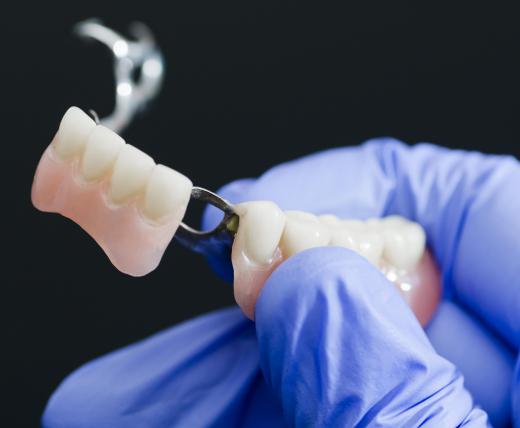Ethylene glycol dimethylacrylate is a diester, meaning there are two alcohol/acid combinations in a single organic compound or monomer. Industries commonly combine this substance with other chemical formulations to make plastic or rubber. Numerous manufacturers use ethylene glycol dimethylacrylate, frequently referred to as EGDMA, for everything from building materials to medical appliances and laboratory research. Scientists commonly combine the compound with other substances to create copolymeric surfaces on which they regenerate living tissue.
The condensation of methacrylic acid and ethylene glycol produces ethylene glycol dimethylacrylate, which is a colorless, odorless liquid. When combined with polymerized compounds that include methyl methacrylate, the molecular weight increases, and EGDMA becomes more of a gel or wax-like solid. The compound is water-soluble but will dissolve in a number of solvents. Ethylene glycol dimethylacrylate is generally not irritating, toxic, or volatile.

Plastic and rubber industries commonly include ethylene glycol dimethylacrylate when manufacturing fiberglass polyester, polyvinyl chloride piping, and rubber tubing. The substance is frequently one of the ingredients used to manufacture acrylic sheets, plastics, and resins. The compound generally increases the rigidity of these products but also endows finished products with friction-withstanding capabilities. EGDMA also enhances products by providing chemical, heat, and weather resistant properties.

Adhesives, emulsifying agents, humectants, and plasticizers may contain EGDMA. Manufacturers commonly add the compound to detergents and textile lubricants, and industries that manufacture paper or printing ink may also use it. In the pharmaceutical industry, ethylene glycol dimethylacrylate can be used as a medicinal dispenser or be included in the base of ointments and suppositories. As a resin, EGDMA is one of the components in the material dentists use to reline dentures.

Some nail products commonly include ethylene glycol dimethylacrylate. Manufacturers use EGDMA for creating artificial, self-stick nails and nail tips. The nonirritating, nontoxic properties of the organic substance allow its safe use in contact lens applications. It is one of the materials commonly used in manufacturing soft, hydrophilic contact lenses.
Medical industries also use ethylene glycol dimethylacrylate in hydrogel form to create artificial corneas and intraocular lens implants. Laboratories often use natural hydrogels for growing cells and reconstructive tissues. These substances may degrade too rapidly or may not be readily available. Researchers devised a means of using EGDMA, hydroxyethylmethacrylate, ascorbic acid, and water in a process that creates synthetic hydrogels that are capable of supporting cell life. Scientists use these synthetic hydrogels to grow human corneal epithelial cells.
